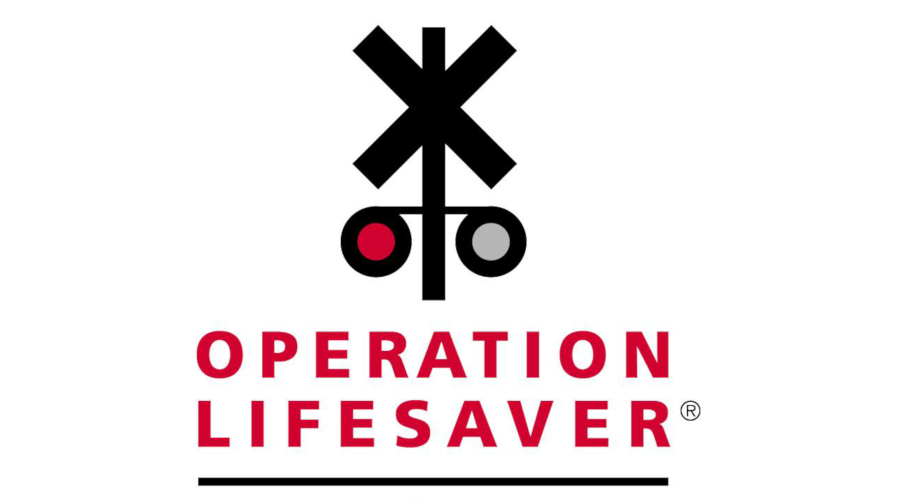Newsletter Sign Up
Stay updated on news, articles and information for the rail industry
Stay updated on news, articles and information for the rail industry
RAIL EMPLOYMENT & NOTICES
Rail News Home
Rail Industry Trends
Rail News: Rail Industry Trends
7/23/2010
Rail News: Rail Industry Trends
Sen. Lautenberg's newly minted FREIGHT Act seeks to 'transform' U.S. transportation policy
advertisement
Yesterday, Sen. Frank Lautenberg (D-N.J.) introduced the Focusing Resources, Economic Investment and Guidance to Help Transportation Act of 2010, or FREIGHT Act (S. 3629), which supporters believe will help transform the nation’s transportation policy and generate more federal investment in the U.S. freight network.
Co-sponsored by Sens. Patty Murray (D-Wash.) and Maria Cantwell (D-Wash.), the bill calls for the creation of a new National Freight Infrastructure Grants initiative, a competitive, merit-based program that would provide broad eligibility for multi-modal freight investments and focus funds on projects offering the most public benefits. The FREIGHT Act also would establish a more comprehensive freight policy with outcome-oriented and performance-based goals, and focus on improving connectivity between modes, supporters — including the Coalition for America's Gateways and Trade Corridors (CAGTC) — believe.
“Poor planning and underinvestment in our transportation infrastructure has led to increased congestion at our ports, highways, airports and railways, and increases the cost of doing business,” said Lautenberg in a prepared statement. “If we want to help U.S. businesses succeed and create new jobs, we need a freight transportation system that works better and can grow with the changing needs of the global economy.”
The FREIGHT Act also would direct the U.S. Department of Transportation (USDOT) to develop and implement a National Freight Transportation Strategic Plan to guide and inform goods movement infrastructure investments, and an Office of Freight Planning and Development led by an assistant secretary for freight planning and development. The USDOT would need to develop baselines, tools and methods within two years to measure progress.
In addition, the legislation would encourage improvements to air quality, energy usage, and public health and safety by establishing environmental goals to complement existing freight corridor environmental goals.
The FREIGHT Act is flexible enough to proceed as a stand-alone bill or become a piece of surface transportation reauthorization legislation, according to CAGTC, which plans to work together with supporters the Environmental Defense Fund and Transportation for America to lobby others in the transportation industry to back the bill.
During a press conference held yesterday, representatives from CAGTC, several of its more than 60 members and other transportation industry groups discussed how the FREIGHT Act would have a major impact on the nation’s freight transportation policy. CAGTC members include the Alameda Corridor-East Construction Authority, Florida East Coast Railway, Intermodal Association of North America (IANA), Los Angeles County Metropolitan Transportation Authority, National Railroad Construction and Maintenance Association (NRC) and a number of ports.
The bill “matches the nation’s freight transportation policy to trade policy,” said Kurt Nagle, president and chief executive officer of the American Association of Port Authorities, adding that the Administration aims to double exports in five years and an expanded freight transportation system would help achieve that goal.
Meanwhile, the FREIGHT Act’s proposed National Freight Infrastructure Investment Grants program would be “an important new tool in the federal toolbox,” said NRC President Chuck Baker.
“It would help fund exactly the type of multi-modal, multi-jurisdictional, major transportation infrastructure projects that have historically been overlooked by the federal transportation investment process," he said.
For IANA President and CEO Joni Casey, the bill is a “recognition and validation” of the freight transportation system’s importance to the nation’s growth.
“In our view, there is something for everyone in this bill,” she said.
There is for rail, Association of American Railroads (AAR) officials believe. The FREIGHT Act will help promote public-private partnerships that enable safe and efficient goods movement via rail, said AAR President and CEO Edward Hamberger in a statement.
“This bill recognizes the importance of rail in … national policy — as the safest, most fuel efficient and highly cost-effective way to move both people and goods,” he said. “Freight rail is well positioned to help meet the goals envisioned by the senators and outlined in this bill.”
— Jeff Stagl
Co-sponsored by Sens. Patty Murray (D-Wash.) and Maria Cantwell (D-Wash.), the bill calls for the creation of a new National Freight Infrastructure Grants initiative, a competitive, merit-based program that would provide broad eligibility for multi-modal freight investments and focus funds on projects offering the most public benefits. The FREIGHT Act also would establish a more comprehensive freight policy with outcome-oriented and performance-based goals, and focus on improving connectivity between modes, supporters — including the Coalition for America's Gateways and Trade Corridors (CAGTC) — believe.
“Poor planning and underinvestment in our transportation infrastructure has led to increased congestion at our ports, highways, airports and railways, and increases the cost of doing business,” said Lautenberg in a prepared statement. “If we want to help U.S. businesses succeed and create new jobs, we need a freight transportation system that works better and can grow with the changing needs of the global economy.”
The FREIGHT Act also would direct the U.S. Department of Transportation (USDOT) to develop and implement a National Freight Transportation Strategic Plan to guide and inform goods movement infrastructure investments, and an Office of Freight Planning and Development led by an assistant secretary for freight planning and development. The USDOT would need to develop baselines, tools and methods within two years to measure progress.
In addition, the legislation would encourage improvements to air quality, energy usage, and public health and safety by establishing environmental goals to complement existing freight corridor environmental goals.
The FREIGHT Act is flexible enough to proceed as a stand-alone bill or become a piece of surface transportation reauthorization legislation, according to CAGTC, which plans to work together with supporters the Environmental Defense Fund and Transportation for America to lobby others in the transportation industry to back the bill.
During a press conference held yesterday, representatives from CAGTC, several of its more than 60 members and other transportation industry groups discussed how the FREIGHT Act would have a major impact on the nation’s freight transportation policy. CAGTC members include the Alameda Corridor-East Construction Authority, Florida East Coast Railway, Intermodal Association of North America (IANA), Los Angeles County Metropolitan Transportation Authority, National Railroad Construction and Maintenance Association (NRC) and a number of ports.
The bill “matches the nation’s freight transportation policy to trade policy,” said Kurt Nagle, president and chief executive officer of the American Association of Port Authorities, adding that the Administration aims to double exports in five years and an expanded freight transportation system would help achieve that goal.
Meanwhile, the FREIGHT Act’s proposed National Freight Infrastructure Investment Grants program would be “an important new tool in the federal toolbox,” said NRC President Chuck Baker.
“It would help fund exactly the type of multi-modal, multi-jurisdictional, major transportation infrastructure projects that have historically been overlooked by the federal transportation investment process," he said.
For IANA President and CEO Joni Casey, the bill is a “recognition and validation” of the freight transportation system’s importance to the nation’s growth.
“In our view, there is something for everyone in this bill,” she said.
There is for rail, Association of American Railroads (AAR) officials believe. The FREIGHT Act will help promote public-private partnerships that enable safe and efficient goods movement via rail, said AAR President and CEO Edward Hamberger in a statement.
“This bill recognizes the importance of rail in … national policy — as the safest, most fuel efficient and highly cost-effective way to move both people and goods,” he said. “Freight rail is well positioned to help meet the goals envisioned by the senators and outlined in this bill.”
— Jeff Stagl


 2025 MOW Spending Report: Passenger-rail programs
2025 MOW Spending Report: Passenger-rail programs
 Gardner steps down as Amtrak CEO
Gardner steps down as Amtrak CEO
 Guest comment: Oliver Wyman’s David Hunt
Guest comment: Oliver Wyman’s David Hunt
 Women of Influence in Rail eBook
Women of Influence in Rail eBook
 railPrime
railPrime







